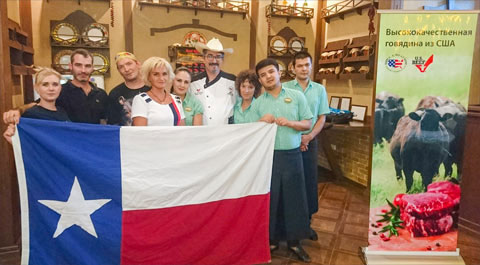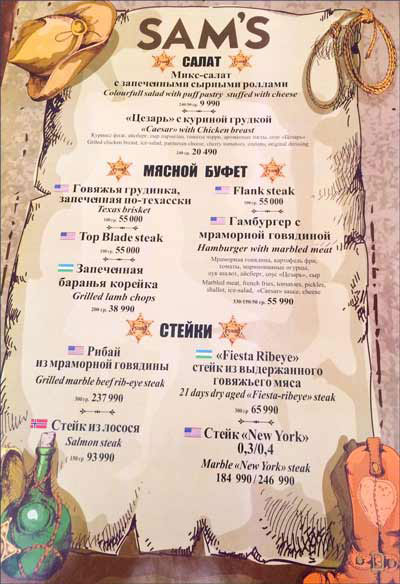



US Beef Master Class in Uzbekistan Focuses on Alternative Cuts
UZBEKISTAN - Following a series of successful US beef master classes in Uzbekistan in 2015 and 2016, USMEF took things a step further in 2017 by inviting Jay McCarthy, one of the most respected chefs in the US, to conduct a special master class for chefs, importers and foodservice managers . The class, funded by the Beef Checkoff Program and the Texas Beef Council, was held in Tashkent, Uzbekistan’s capital city.
"Chef McCarthy’s master class was focused on the fact that today we see a much greater presence of alternative US beef cuts in the Uzbekistani market, which means USMEF’s efforts to convince importers and foodservice professionals to try alternative cuts are finally paying off," said Galina Kochubeeva, USMEF representative in Russia and the Surrounding Region.
"With this in mind, it’s no surprise the master class we conducted with importer Denko Mix was very well-received by the professional audience in Tashkent."
The class focused on foodservice specialists, buyers and chefs from top restaurants and hotels in Tashkent. Those selected either already work with US beef or are considering introducing US beef to their restaurant menus. More than 20 restaurants sent representatives to the master class to learn more about ways to present US beef to their customers.

"We made it clear that the foodservice sector in Uzbekistan should emphasize the message that US beef is not just about high-end premium cuts, but it is also about a variety of very high-quality and consistent cuts such as brisket, top blade and chuck," explained Kochubeeva, who added that several chefs in Uzbekistan and the neighboring region have received Texas-style chef training.
"Special attention during this particular class was given to the brisket – the cut that we feel can be a popular item in Uzbekistan."

Chef McCarthy also demonstrated the use of a variety of other cuts in various applications and shared his global experience in working with US beef.
"It is important that we continue to educate Uzbekistani foodservice professionals about US beef and its availability to the market," said Ms Kochubeeva.
"USMEF’s efforts so far have resulted in regular shipments of US beef and a presence on the menus of almost all top-end restaurants in Tashkent. There’s also a much better awareness of US beef’s quality."
Ms Kochubeeva said the US beef master class came at an important time in Uzbekistan, which is undergoing changes in trade relations. Market access and import procedures could improve due to recent developments.
"In July we saw the PEDV-related ban on US pork finally lifted by Uzbekistani veterinary authorities and, with renewed access for US pork into the market, we might see pork imports create better logistical opportunities for US beef as well," she said.
"Today, most US beef is coming to Uzbekistan via airfreight, making it a very expensive item. Should we see increased volumes of pork exported to Uzbekistan by sea, we may see more combined containers coming to the country."
Ms Kochubeeva also said that with Uzbekistan’s economy going through some major structural changes, it could become an economic engine in the Central Asia region.
"Uzbekistan has a population of 30 million and one of the most diverse economies in the region," she said. "But it has been severely held back by very strict foreign currency control regulations that did not allow for Uzbekistan’s full integration into global trade."
TheCattleSite News Desk


